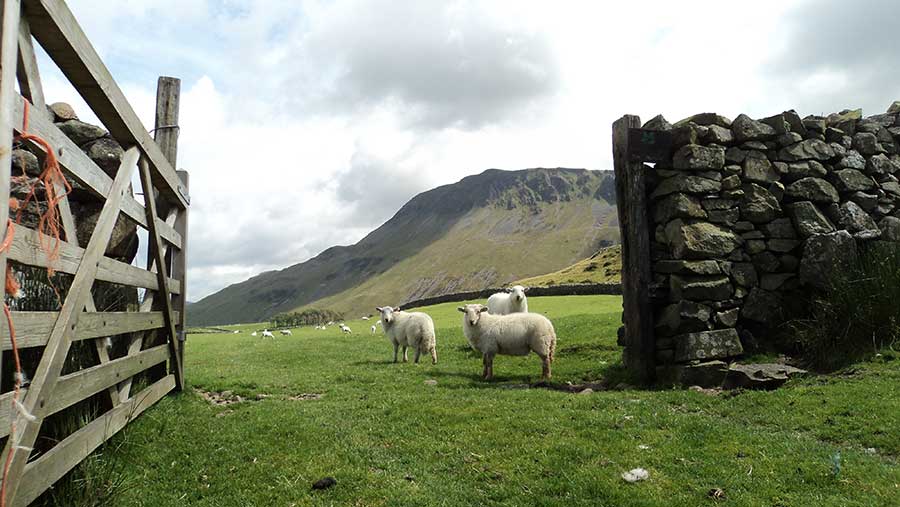Welsh lamb numbers fall 9.7% as UK sheep sector contracts
 © Anne/Adobe Stock
© Anne/Adobe Stock Expectations for a continuation of firm lamb prices have been fuelled by this year’s Defra June census, which suggests flock contraction across all UK nations and Welsh numbers falling to a 14-year low.
UK breeding sheep numbers fell 4.13% on the year in Defra’s livestock census, which this year had a 55% response rate. Lambs and “other sheep” were down 5.66% across the UK and 9.7% in Wales (see table).
See also: Lamb trade fears Australian imports could topple firm market
Glesni Phillips, analyst at Meat Promotion Wales/Hybu Cig Cymru (HCC), said Welsh farmer confidence had grown.
In this year’s HCC sentiment survey, 75% of respondents said they had plans to expand or maintain sheep enterprises, compared with 45% of farmers who said they were cutting back on numbers in 2022.
Ms Phillips said: “Due to high farm input costs, it was anticipated that there would be higher culling rates and therefore fewer ewes for breeding during the time that followed.
“Scanning rates were also reportedly low at the start of the year due to poor weather and ewe conditions.”
Defra June census sheep results |
|||||
|
|
England |
Scotland |
Wales |
Northern Ireland |
UK |
|
Total |
14.45 million (-3.15%) |
6.61 million (-2.77%) |
8.69 million (-7%) |
2.04 million (-2.57%) |
31.8 million (-4.13%) |
|
Female breeders |
6.95 million (-1.64%) |
3.08 million (-1.69%) |
4.42 million (-4.21%) |
973,000 (2.35%) |
15.43 million (-2.4%) |
|
Other sheep/lambs |
7.49 million (-4.5%) |
3.52 million (-3.69%) |
4.27 million (-9.7%) |
1.07 million (-2.76%) |
16.36 million (-5.66%) |
Long-term Scottish decline
Agricultural valuer John Fyall of Highland Rural, Dingwall, said the census results were “no surprise”, given the strong values for heavy cull sheep, good spring lamb trade and the drought across southern counties last year.
“Up here, the drift of sheep off the hills has accelerated in recent years,” Mr Fyall told Farmers Weekly. “Many estates have put sheep off.
“One of the premier sheep shearing events in the country – Lochearnhead Shears in Perthshire – is short of the sheep and shepherds vital to run its event, with that part of the country particularly hard hit.”
He described some of the key factors, including Scottish government policy, that were leading to sheep leaving parts of the highlands and islands:
- Scottish government funding and policy There are some strong grants around for tree planting, which, coupled with carbon and natural capital money, look like a “no brainer”
- Increased tourism Taking sheep off a hill often results in a shepherd’s or tenant’s cottage coming available to rent to holidaymakers for a better yield
- Wintering costs Areas of the western highlands and islands in particular are struggling to find wintering keep due to the Scottish Upland Sheep Support Scheme (SUSSS, also known as the “hogg scheme”) and summer estate “tick mops” increasing demand. While the SUSSS helps some Region 3 farmers, the rest struggle with winter feed and keep costs.
- Strong lamb and cull ewe prices Strong spring prime lamb prices have meant more hoggs have been slaughtered rather than being “gimmered” (kept for breeding). If a lamb is worth £130, why keep her all summer to sell as a breeder for £130?
- Tenure Many retiring sheep farmers are owner-occupiers, or 1991 Act secure tenants, and released farms are not being re-let. Marginal farms attract forestry investors while better ground is let on short-term arrangements which do not give security to invest in breeding stock.
